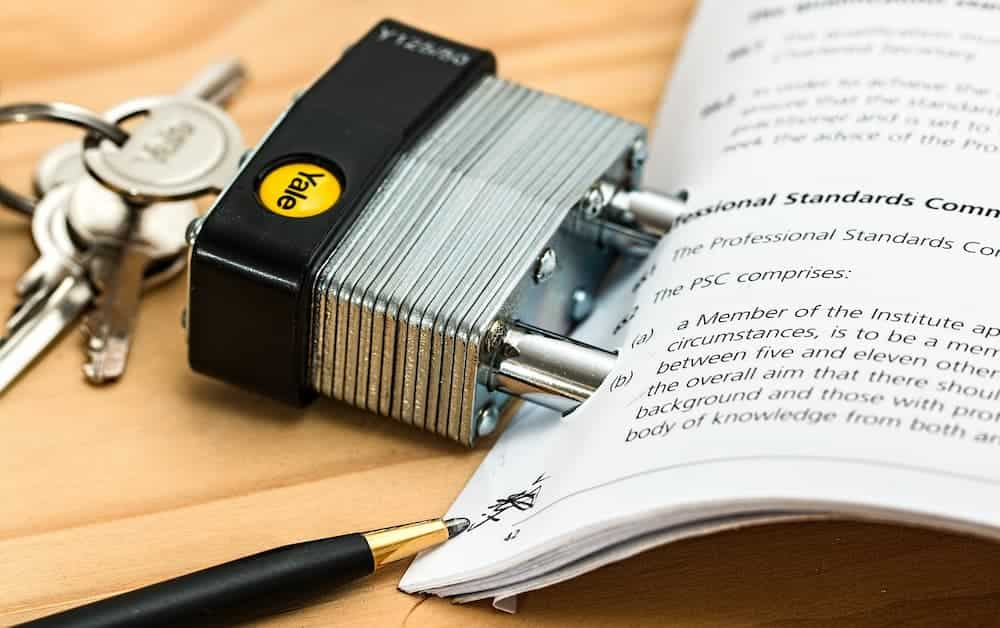Introduction
A Data Protection Impact Assessment (DPIA) is a process that organizations use to identify and assess the risks associated with processing personal data and the measures needed to mitigate those risks. The process is required under the General Data Protection Regulation (GDPR) when data processing activities will likely result in high risks to the data subjects’ rights and freedoms. DPIA is an essential tool that helps organizations ensure compliance with data protection laws and protect the privacy of individuals.
A brief overview of the article
The article will provide an in-depth guide on conducting a Data Protection Impact Assessment (DPIA) to comply with the General Data Protection Regulation (GDPR). It will discuss the importance of DPIA in protecting personal data, outline the steps involved in conducting a DPIA, and provide tips for conducting a successful DPIA. Additionally, the article will address the challenges organizations may encounter when conducting a DPIA and provide recommendations on overcoming them.
Understanding DPIA
A Data Protection Impact Assessment (DPIA) is a process that helps organizations identify, assess, and mitigate the risks that may arise from processing personal data. A DPIA aims to identify and minimize data protection risks before undertaking a processing activity or operation. DPIA helps organizations to ensure that they comply with the GDPR’s requirements for data protection.
When is DPIA required?
Organizations must conduct a DPIA when processing personal data is likely to result in high risks to the data subjects’ rights and freedoms. DPIA is mandatory for processing operations involving systematic monitoring of data subjects on a large scale or processing sensitive data. However, DPIA may also be required for processing operations that involve profiling or automated decision-making.
What does DPIA involve?
A DPIA involves a more systematic and extensive evaluation and assessment of the processing operations’ impact on data subjects’ rights and freedoms. It consists of identifying the risks and evaluating the measures to mitigate them. DPIA also involves:
Assessing the necessity and proportionality of the processing operations.
Considering the data subjects’ rights.
Identifying the legal, ethical, and organizational considerations.

Benefits of Conducting a DPIA
Legal compliance
Conducting a DPIA is a legal requirement under the GDPR for data processing operations performed that are likely to result in a high risk to the rights and freedoms of data subjects. By conducting a DPIA, organizations can ensure that they comply with this requirement and avoid potential fines and legal action.
Risk reduction
DPIA can help organizations identify and mitigate potential data protection risks, reducing the likelihood of data breaches and other security incidents. Organizations can improve the security and integrity of personal data by implementing appropriate measures to reduce identified risks.
Improved data protection
DPIA can help organizations improve their overall data protection practices by identifying areas where they can improve data quality, further data protection solutions, implement additional security measures or revise processing procedures. By implementing these improvements, organizations can enhance the protection of personal data.
Enhanced transparency and trust
Conducting a DPIA can help organizations demonstrate their commitment to data protection and transparency to data subjects, regulators, and other stakeholders. Organizations can enhance trust and transparency by involving data subjects in the DPIA process and implementing appropriate measures to mitigate identified risks.
Conducting a DPIA
Step-by-step process of conducting a DPIA
Identify the need for a DPIA.
The first step in conducting a DPIA is to identify the need for a DPIA. This involves determining whether the processing operation will likely result in high risks to the data subjects’ rights and freedoms. If the answer is yes, then a DPIA is required.
Define the scope of the DPIA.
The second step is to define the scope of DPIA. This involves identifying the data processing operations that will be covered by the DPIA, including the types of personal data that will be processed, the data subjects concerned, and the processing activities.
Assess the necessity and proportionality.
The third step is assessing the processing operations’ necessity and proportionality. This involves considering whether the processing is necessary for the intended purpose and whether the processing is proportional to the intended purpose. The processing must be reasonable and appropriate to the intended purpose.
Identify and assess the risks.
The fourth step is to identify and assess the risks associated with the processing operations. This involves identifying the potential risks to the data subjects’ rights and freedoms, such as unauthorized access, accidental loss, or misuse of personal data.
Identify measures to mitigate the risks.
The fifth step is to identify measures to mitigate the risks identified in step four. This involves identifying appropriate technical and organizational measures to minimize the risks, such as improved physical access control, additional technological security measures, or writing internal guidance to ensure data quality.
Sign off and record the DPIA. The final step is to sign off and record the DPIA. This involves ensuring that the DPIA is reviewed and approved by relevant internal stakeholders, such as the Data Protection Officer (DPO) or the project manager. The DPIA should also be recorded and kept for future reference.

Common Mistakes in DPIA
There are several common mistakes that organizations can make when conducting a DPIA, including:
Failing to involve relevant stakeholders.
Focusing only on compliance with legal requirements rather than considering the impact on data subjects.
Failing to identify all potential risks to data subjects.
Failing to implement appropriate measures to mitigate identified risks.
Failing to review and update the DPIA regularly.
Tips for conducting a DPIA
Involve all stakeholders
It is crucial to involve all relevant stakeholders in the DPIA process to ensure everyone’s concerns are heard and considered. This includes the data subjects concerned, data controllers, data processors, and the data protection officer (DPO). Additionally, relevant internal stakeholders such as IT, legal, and compliance teams should be involved in the DPIA process. This will help ensure that the DPIA considers all aspects of the data processing operation and identifies and addresses any potential issues.
Consider the impact on individuals. One of the main aims of a DPIA is to assess the impact of data processing operations on data subjects. Therefore, it is essential to consider the potential impact of the processing operation on individuals. This includes vulnerable individuals, such as children, , or those with disabilities. The DPIA should consider factors such as the type of data being processed, the purpose of the processing, and the potential risks to individuals, such as discrimination or physical harm.
Use the proper methodology.
Choosing the proper methodology is essential to conducting a thorough DPIA. There are various methods to choose from, including Privacy Impact Assessment (PIA), Information Security Risk Assessment (ISRA), and Data Protection Risk Assessment (DPRA). The selected methodology should match the specific processing operation being assessed.
Be transparent and document the process.
Transparency is essential in conducting a DPIA. All stakeholders must be informed about the purpose and scope of the DPIA, the methodology used, and the assessment results. It is crucial to document the DPIA process and findings in detail. This documentation should include the rationale for decisions made during the assessment, the risks identified, and the measures taken to mitigate those risks. Documentation also helps demonstrate compliance with data protection regulations and can be helpful in the event of an audit or investigation.
Identify measures to mitigate the risks.
Once risks have been identified, it is essential to identify measures to mitigate those risks. This includes technical and organizational measures, such as improved physical access control or additional technological security measures. Additionally, it may be necessary to revise internal policies and procedures or provide additional training to employees involved in the processing operation. The goal is to minimize the risks associated with the processing operation and ensure that data protection obligations are met.
Sign off and record the DPIA.
The final step in the DPIA process is to sign off and record the assessment. All relevant stakeholders, including the DPO and data controllers, should sign off on the DPIA to demonstrate their agreement with the findings and measures proposed. The DPIA should be recorded and stored for future reference. This documentation can be useful in demonstrating compliance with data protection regulations and can also be used to inform future assessments.

Challenges in Conducting DPIA
Despite the importance of DPIA, there are several challenges that organizations may face when conducting assessments. These challenges include:
Lack of understanding of DPIA
Many organizations may not fully understand what DPIA involves or why it is necessary. This can lead to inadequate assessments or a failure to conduct assessments at all. Education and training on DPIA can help organizations better understand the process and its importance.
Lack of resources
Conducting a DPIA can be a resource-intensive process. Organizations may lack the necessary resources, such as time, personnel, or expertise, to conduct assessments effectively. In some cases, it may be necessary to seek out internal and external factors and assistance from consultants or third-party experts.
Legal and technical complexities
DPIA can be complex, involving legal and technical considerations that may be difficult to navigate. Organizations may require legal or technical expertise to conduct assessments effectively.
Ethical considerations
DPIA involves considering the impact of data processing operations on individuals. This can raise ethical considerations, such as the potential for discrimination or bias. Organizations may require additional expertise or guidance to address these considerations effectively.
Conclusion
DPIA is an essential process for organizations processing personal data. Conducting a thorough DPIA can help identify and mitigate data protection risks and ensure compliance with a data protection law and legislation like GDPR. To conduct an effective DPIA, organizations should involve all relevant stakeholders, consider the impact on individuals, use the right methodology, be transparent, and document the process. Despite the challenges in conducting DPIA, organizations must prioritize this process to protect personal data, ensure compliance and meet their data protection obligations.







